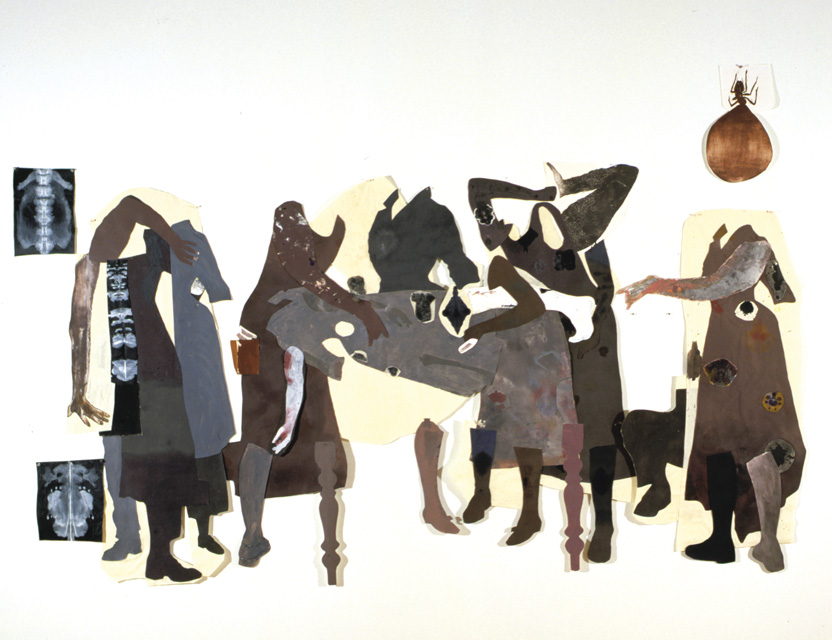


In Anatomy lesson (1995) Sally Smart acknowledges and extends upon several concerns arising from the incorporation of feminist theory into artistic practice. Smart nominated 'issues of identity; using the body (or absence of the body) and dress as an object of psychical and physical inscription'1 as the focus of the work. Such an agenda has direct origins in the issues pursued by the Women's Art Movement of the late 1970s, of which Smart can be identified as an heir. This is not to suggest that an art engaged with feminist issues pursues a set path. In fact, Smart frequently takes what might be called classic figures of the Women's Art Movement—the recuperation of women's history, the critique of the social framing of women’s identity, the use of materials and techniques evoking domestic craft—and pursues them in imaginative ways.
One theme of Anatomy lesson is the history of women's institutional experience; specifically, the struggles of 'bluestockings' to gain equal access to universities in the nineteenth and twentieth centuries. Likewise, the paper cut-out components of the piece recall the emphasis on the rediscovery of women's crafts in the 1970s (Smart connects her technique with paper dolls and pattern making). But the fluidity of the arrangement and the interchangeability of some parts injects a new note of flexibility; her assemblage doesn’t seek to define women's experience so much as create 'fugitive assemblages of signs of identity'.2
Smart has an analytical impulse, just as the anatomists in her assemblage do. She dissects the body as image, rather than the body as flesh. But the knowledge that she generates is the weird science of an art informed by Surrealism and psychoanalytical theory. As critic Helen McDonald remarks:
The free association of images celebrates the play element in art, but it also entails the dismantling of identity and a critique of representation, since it imitates the arbitrary way media images construct our idea of reality. ... [Smart's] purpose was to deconstruct traditional conceptions of the mind, body, femininity and reality.3
In simpler terms, as Smart observes, 'The great thing about art is its capacity to keep opening up'.4
The aim of finding new spaces in which to conceive of women's identity explains the unusual subject matter of Stuttering (1993). The hybrid figures—half-fox, half-woman—gathered around a table, refer to the Fox sisters, American spiritualists of the nineteenth-century. Leah, Kate and Margaretta Fox, of Hydesville, New York are credited as the first exponents of typtology: communication with spirits through table rapping. Condemned as frauds, the sisters were hardly the stuff of the feminist pantheon. What is important to Smart is not the integrity of their communication with the spirit world but the fact that they could 'cross over' to a position of power and knowledge outside of the western rationalist canon.
Smart is not interested in finding heroines to match the 'great men' of history; her heroines are the tricksters and the enigmas. Her project, as McDonald suggests, moves beyond a critique of the patriarchy to question reason and reality as such. To return to Anatomy lesson, then, the question is not, Why shouldn't women learn medicine? but rather, Is science the best way of understanding human experience? In this regard, the formal elements common to both works are telling. Women are shown as a community or sisterhood, engaged in collective actions. While their figures are fragmented and incomplete, their gestures are strong; the artist seeks the signs of agency over appearance. The space in which the women move is uncertain, and is littered with foggy, indecipherable images such as X-rays and Rorschach blots. Smart’s expansive compositions and evocative symbols 'keep opening up'.
- Chris McAuliffe
For further reading on the life and work of Sally Smart, visit the Sally Smart website.